We use cookies to improve your experience. By accepting you agree to our cookie policy

 Understanding how we sleep and the stages of sleep we go through including Rapid Eye Movement (REM) sleep is important so we can try to get the best possible night’s sleep.
Understanding how we sleep and the stages of sleep we go through including Rapid Eye Movement (REM) sleep is important so we can try to get the best possible night’s sleep.
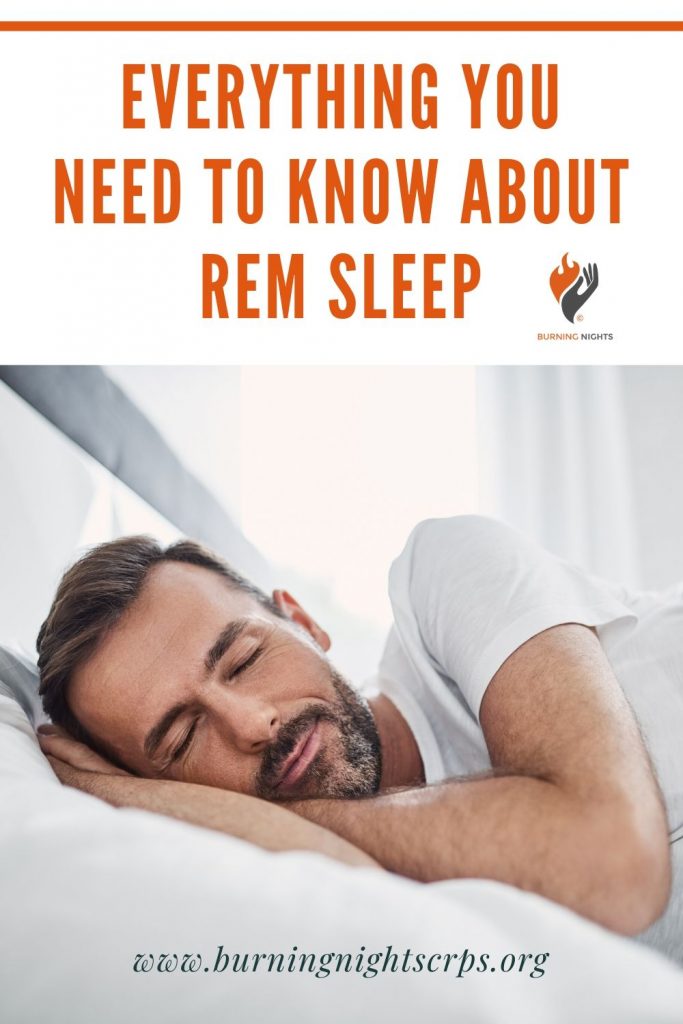
This article gives you everything you need to know about rapid eye movement or REM sleep, the various stages of sleep as well as sleep cycles. We will be writing another article on giving you tips to help you get the best night’s sleep.
To allow us to sleep, our nervous systems must calm down. However for Complex Regional Pain Syndrome patients or chronic pain patients in general have over active nervous systems. Learning sleep hygiene tips to help you try and calm your nervous systems down is important.
When you are going to sleep most people will experience their brain going through 5 separate stages which are 1, 2, 3, 4 and Rapid Eye Movement (REM).
REM makes up approximately 20%-25% of your time spent asleep, but does vary with age. This REM sleep first occurs about 70-90 minutes after you fall asleep, however because sleep comes in cycles you will enter REM sleep several times during your nightly sleep.
According to an article by Medical News Today (2014), REM is:
“… characterized by quick, random movements of the eyes and paralysis of the muscles.”
According to the SLEEP website by Mastin, L. (2013):
“For millennia it was believed that sleep was merely a passive state in which the body and mind rested or, as Aristotle believed, just an unremarkable and unimportant period marked by an absence of our usual sense perceptions. As often as not, it was thought of as a necessary evil or, at best, a kind of envelope or container for the more interesting and important act of dreaming.”
It seems that sleep is an essential physiological process and so when we are deprived of sleep we don’t function as well, feel irritable, we make more mistakes, feel tired and we become less creative.
It is important to get both quality and quantity of sleep in order to feel fully refreshed in the morning when you wake up. However the exact reason why it is an essential process isn’t quite as easy to say. William Dement, the co-discoverer of REM sleep (SLEEP website), said:
“As far as I know, the only reason we need to sleep that is really really solid is because we get sleepy.”
Some of the theories as to why we actually sleep include:
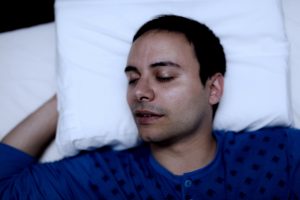
Rapid Eye Movement (REM) Why is sleep important?
Sleep is a crucial part of our lives as it plays a vital part of our good health and general well-being.
It is essential for survival. According to the NIH website:
“Getting enough quality sleep at the right times can help protect your mental health, physical health, quality of life, and safety.”
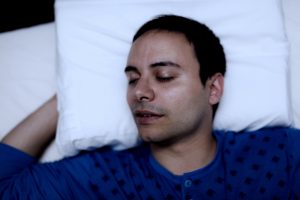 Sleep also helps to improve healthy brain function, emotional well being, it is necessary for nervous systems to work properly as well as physical health.
Sleep also helps to improve healthy brain function, emotional well being, it is necessary for nervous systems to work properly as well as physical health.
Having quality sleep also has an affect on your daytime performance. The NIH website states:
“Getting enough quality sleep at the right times helps you function well throughout the day. People who are sleep deficient are less productive at work and school. They take longer to finish tasks, have a slower reaction time, and make more mistakes.
After several nights of losing sleep—even a loss of just 1–2 hours per night—your ability to function suffers as if you haven’t slept at all for a day or two.
Lack of sleep also may lead to microsleep. Microsleep refers to brief moments of sleep that occur when you’re normally awake.”
According to the SLEEP website / Mastin, L. (2013):
“It has been known that sleep goes in cycles since as early as 1937, and the distinction between REM and non-REM sleep was established in 1953. Since then, the various sleep stages have been defined and redefined until we have the breakdown of types and stages we know today…”
Sleep comes in cycles and you will experience the REM sleep at least 4 or 5 times per night. A complete sleep cycle will take around 90-120 minutes.
The cycles will start at stage 1 which is seen as Non-Rapid Eye Movement sleep or Non-REM also known as NREM and will then go through to the REM stage, it will then return back to stage 1 and repeat the 5 stages again.
The Sleepdex website say that:
“The first sleep cycles each night have relatively short REM sleeps and long periods of deep sleep but later in the night, REM periods lengthen and deep sleep time decreases. “
Sleep doesn’t progress through each of the stages in sequence, instead as Walcutt, D. (2013) says:
“Sleep begins in Stage One and progresses into stages 2, 3, and 4. Then, after Stage Four sleep, Stages Three, then Two are repeated before going into REM sleep. Once REM is over, we usually return to Stage Two sleep. Sleep cycles through these stages approximately 4 or 5 times throughout the night.”
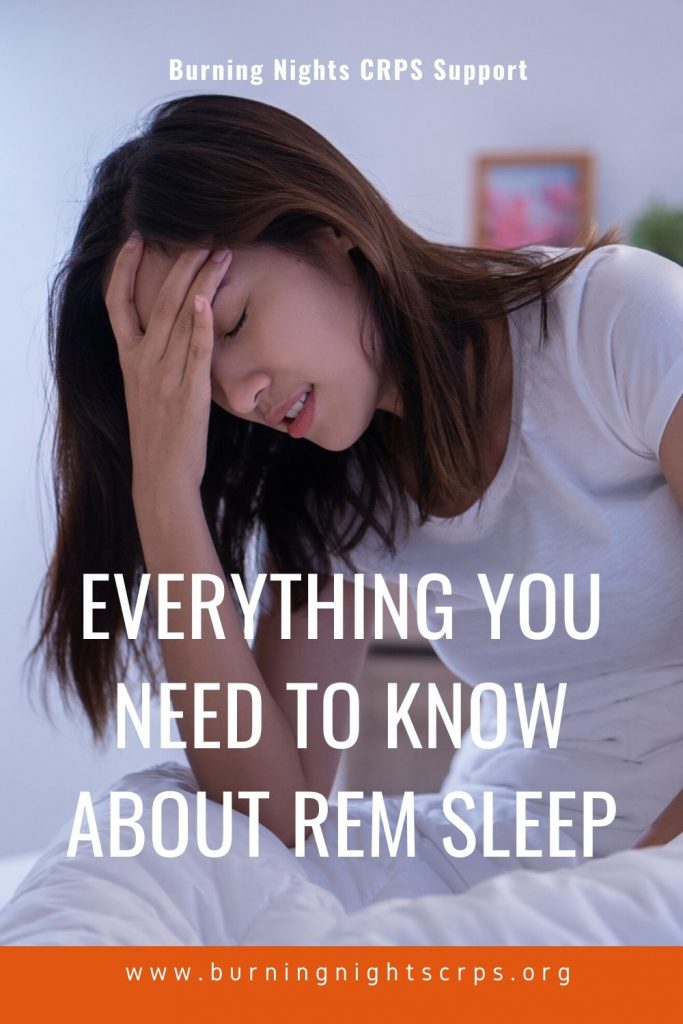
There are 3 or 4 phases of non-REM or NREM sleep and each phase can last between 5 to 15 minutes and you will go through all 3 phases before reaching REM sleep. (Web MD website)
Non-REM or NREM sleep accounts for around 75% of the night and as we begin to fall asleep our bodies will enter NREM sleep which comprises of Stages 1-4.
According to a research study by Brown, R.E. et al. (2012) they said that:
“Non-rapid-eye-movement (NREM) sleep results in conservation of brain energy and facilitates memory consolidation through the modulation of synaptic weights. Rapid-eye-movement (REM) sleep results from the interaction of brain stem cholinergic, aminergic, and GABAergic neurons which control the activity of glutamatergic reticular formation neurons leading to REM sleep phenomena such as muscle atonia, REMs, dreaming, and cortical activation.”
Stage 1 – NREM
This is where you are between being awake and falling asleep. So your eyes may be closed but it is easy to wake you up. It is considered light sleep. This phase may last 5-10 minutes.
In the article by Walcutt, D. (2013) she said:
“… it’s not unusual to experience strange and extremely vivid sensations or a feeling of falling followed by sudden muscle contractions. These are known as hypnogogic hallucinations. You may even feel like you are hearing someone call your name, or the phone ringing. Recently, I thought I heard the doorbell, but realized that it was a hypnogogic hallucination and went back to sleep.”
Stage 2 – NREM
This is the onset of sleep, so you are in a light sleep phase. Your heart rate will slow down, your breathing becomes irregular and your body temperature will drop, which is why sleeping in a cool room is helpful. You will also become disengaged from your surroundings. Your body is now getting ready for deep sleep. This stages lasts about 20 minutes.
This is now deep sleep phase and the most restorative. So your blood pressure drops, your breathing becomes slower and your muscles start to relax. The blood supply to the muscles increases and tissue growth and repair will occur including building of bones.
Your energy is restored and hormones are released such as Growth Hormone which is essential for growth and development including muscle development. It is during this stage that it will be the most hardest to wake you and if someone did wake you, you would feel disorientated for a few minutes.
During the last stage, Stage 4 or Delta Sleep, it will last around 30 minutes and this is when bed-wetting and sleep walking will tend to occur.
This accounts for approximately 25% of the night’s sleep. The first will occur about 90 minutes after falling asleep and recurs about every 90 minutes getting longer later in the night.
It provides energy to the brain and the body so it supports your daytime performance. Your brain is active and this is the time when you begin to have intense dreams. Your eyes will go back and forwards and your body will become immobile and relaxed as the muscles are turned off.
The paralysation of your body during this stage is a built in protective measure to stop you from harming yourself. When you are paralysed you cannot leap out of bed and run.
It is during this immobile time that because the muscles have become inactive it affects the breathing and this is when snoring can occur as well as other sleep problems.
According to the National Sleep Foundation (2015):
“… levels of the hormone cortisol dip at bed time and increase over the night to promote alertness in morning. Sleep helps us thrive by contributing to a healthy immune system, and can also balance our appetites by helping to regulate levels of the hormones ghrelin and leptin, which play a role in our feelings of hunger and fullness. So when we’re sleep deprived, we may feel the need to eat more, which can lead to weight gain.”
It is believed that we spend 1/3rd of our lives sleeping and sleep does play a very productive and direct part in our lives. It plays a part in our energy levels as well as our success.
We need long periods of sleep every night so our bodies can go through each of the stages of the sleep cycle to allow healing and to stay healthy.
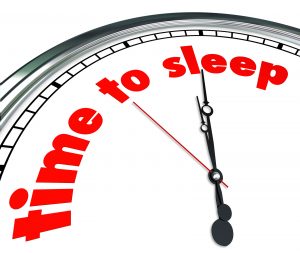 REM sleep is important as it creates dreams, improves and promotes learning and increases brain activity.
REM sleep is important as it creates dreams, improves and promotes learning and increases brain activity.
Losing a night’s sleep the person will become clumsy and irritable during the next day and will either become tired more easily or will speed up because of Adrenaline.
When 2 night’s sleep are lost the person will lose concentration and will make mistakes on everyday normal tasks.
Finally if 3 night’s sleep are lost, a person will lose a grip on reality and will start to hallucinate.
According to the Sleepdex website and AlDabal, L & BaHammam, A.S. (2011):
“Sleep deprivation seems to increase levels of inflammatory mediators such as IL-1, IL-6 and TNF…… Inflammation is associated with (scientists aren’t willing to use the word “cause”) a number of long-term chronic illnesses such as heart problems and cancer. There is no smoking gun leaking restricted sleep to these conditions, but it is reasonable to assume poor sleep increases the change of developing health problems.”
REM sleep has a couple of different functions so it is not just a stage of sleep. One of the functions is memory consolidation and the other is stimulation of the Central Nervous System (CNS) development.
According to Nordqvist, J. (2014) he says that:
“One theory states that REM sleep is important for the consolidation, or stabilization of spacial and procedural memory.”
In the same article it was said that:
“REM sleep can help eliminate abnormal modes of interaction in the neural networks of the cerebral cortex.”
One theory is that REM sleep is vital for the development of the human brain in infants. It has been said that REM sleep is responsible for the neural stimulation necessary to develop mature neural connections.
In the article by Nordqvist, J. (2014) he says that:
“Supporting evidence for this is seen in how the number of hours spent in REM sleep reduces as one ages, and how sleep deprivation in early life can be a cause of behavioral problems, sleep disruption and decreased brain mass. This theory suggests that REM sleep might not have any essential role in mature human brains.”
In a recent research study by Tang, N.K.Y. and Sanborn, A.N. (2014), they studied the effects of the quality of sleep on chronic pain sufferers. This is their conclusion:
“…the current study identified sleep quality rather than pain and low mood as a key driver of physical activity the next day. In the absence of any intervention, chronic pain patients having had a better night of sleep spontaneously engaged in more physical activity the following day. This suggests a naturally energising function of sleep and highlights the often-overlooked continuity between nighttime sleep and daytime physical activity.”
Have you ever heard anyone talk in their sleep, maybe hit out or become physically agitated? Then REM Behaviour Disorder may be the reason.
REM Behaviour Disorder or REM Sleep Behaviour Disorder (RBD) is a sleeping condition that has always been in existence but wasn’t first described until 1986.
RBD is a sleep disorder that occurs during the Rapid Eye Movement sleep phase and involves unusual actions or behaviour.
According to Nordqvist, C. (2012):
“REM behavior disorder is a type of parasomnia. Parasomnias are sleep disorders in which strange or dangerous events occur, that affect or intrude on sleep. Examples include sleep terrors, REM behavior disorder, nocturnal dissociative disorder, somnambulism (sleepwalking), and sleep talking.”
Rapid Eye Movement (REM) disorders
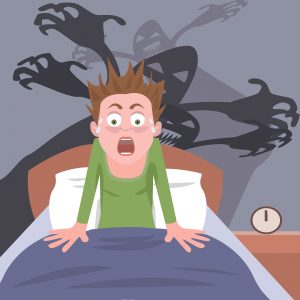 As we outlined above, during REM sleep because of the lack of temporary muscle paralysis sleepers will become physically agitated, actively moving their limbs, getting up and engaging in actions associated with walking.
As we outlined above, during REM sleep because of the lack of temporary muscle paralysis sleepers will become physically agitated, actively moving their limbs, getting up and engaging in actions associated with walking.
Some people may even talk, scream, shout, punch or hit during their sleep. There are cases where people have even injured the person they may share a bed with or themselves.
If you are experiencing physical REM sleep disturbances please speak to your doctor and ask them for a sleep study.
The exact causes of REM Behaviour Disorder (RBD) are unknown, however researchers have found that it has been linked to people with a degenerative illness such as dementia, Parkinson’s or multi-system atrophy.
In 2006 in a study by the Mayo Clinic, they found that RBD amongst younger people may be linked to antidepressant use. It can also be caused by adverse reactions to certain drugs or during strict drug withdrawal. Any who suddenly withdraws after being an alcoholic will also be at a higher risk of developing RBD.
Due to the fact that we go through REM phase sleep every 90-120 minutes during an average night’s sleep, RBD episodes could take place 3 to 4 times per night.
In some exceptional cases in may occur once a week or even once a month. RBD episodes will tend to occur towards the hours of the morning as REM sleep is more frequent then.
To achieve an accurate diagnosis the person must be assessed in a recognised sleep clinic. This assessment includes taking a full medical history including any family history, a physical exam including a neurological exam and you may be asked to complete a sleep diary.
In Nordqvist, C. (2012) article it says:
“If the patient is kept under observation throughout the night – including monitoring of sleep, brain and muscle activity – any lack of muscle paralysis during REM sleep will be detected. It will also be possible to rule out other possible causes of parasomnias.”
RBD can be treated successfully which is good news. The main treatment which is around 90% effective is medication including low doses of clonazepam and benzodiazepine. There are also some antidepressants and melatonin which can help reduce some violent behaviour.
Another way to help RBD and other sleep disorders is to try Cognitive Behavioural Therapy to try and overcome the disorder.
During CBT sessions, it will consist in 2 parts. The 1st part being to convince the person with the sleep disorder that their problem is manageable and the 2nd part is to establish good sleep practice.
As a general rule, the best or adequate sleep is when there’s not been any day time sleepiness and if we are getting sufficient sleep then we tend to feel wide awake during the day and we can perform all our daily activities without problem.
Adults tend to need around 8 hours of sleep per night, however in reality this is more likely to be 7 – 7 1/2, but this will depend entirely on each individual as every person’s need for sleep is different.
Some people are seen as ‘short-sleepers’ or ‘long-sleepers’ and it can also depend on genetics as to each person’s need. These long and short sleepers are not seen as people having sleep disorders.
How much sleep we need is also dependent on our age because as we get older we tend to need less sleep until we reach adulthood and then it remains a constant.
When we reach the age of around 55 then people will tend to sleep earlier in the evenings instead of during adulthood when we would sleep at the usual night time. According to a table on the number of hours per day by Mastin, L. (2013) SLEEP website:
|
Age |
Daily Sleep Requirement |
|
|
|
|
Newborns (0-2 months) |
12-18 hours |
|
Infants (3-11 months) |
14-15 hours |
|
Toddlers (1-3 years) |
12-14 hours |
|
Preschoolers (3-5 years) |
11-13 hours |
|
Young children (5-10 years) |
10-11 hours |
|
Adolescents (10-17 years) |
8.5-9.25 hours |
|
Adults |
7-9 hours |
Unfortunately we know that pain affects sleep. The pain-sleep cycle starts when pain is first experienced. The pain triggers poor sleep or sleeplessness in the first instance, then on the next night it happens again, and so on, the cycle of poor sleep and pain is now complete. Pain is often associated with insomnia and these co-existing conditions are very difficult to treat.
Chronic pain can trigger microarousals, which are changes in our sleep state to a less restful stage, posing a direct and important sleep intrusion.
In a 2006 study Roehrs, T. et al. concluded that the loss of 4 hours of sleep and specific REM sleep loss are hyperalgesic on the following day. This implies that pharmacologic treatments and clinical conditions that reduce sleep and REM sleep time may increase levels of pain.
Check out our article on how to get a better sleep with CRPS or chronic pain which will give you hints and tips on getting a better night’s sleep when you live with persistent pain or Complex Regional Pain Syndrome (CRPS).
So, to conclude this Rapid Eye Movement or REM article, you can see that not only is sleep an important part of our lives which can sometimes be disrupted by chronic illness. REM sleep is also important to help control levels of inflammation, to help improve or repair our memory and to develop the human brain in infants.
Please share our blogs on social media! What tips do you have for trying to get a good night’s sleep? Let us know by posting a comment below.
Last Updated: 26/04/2023